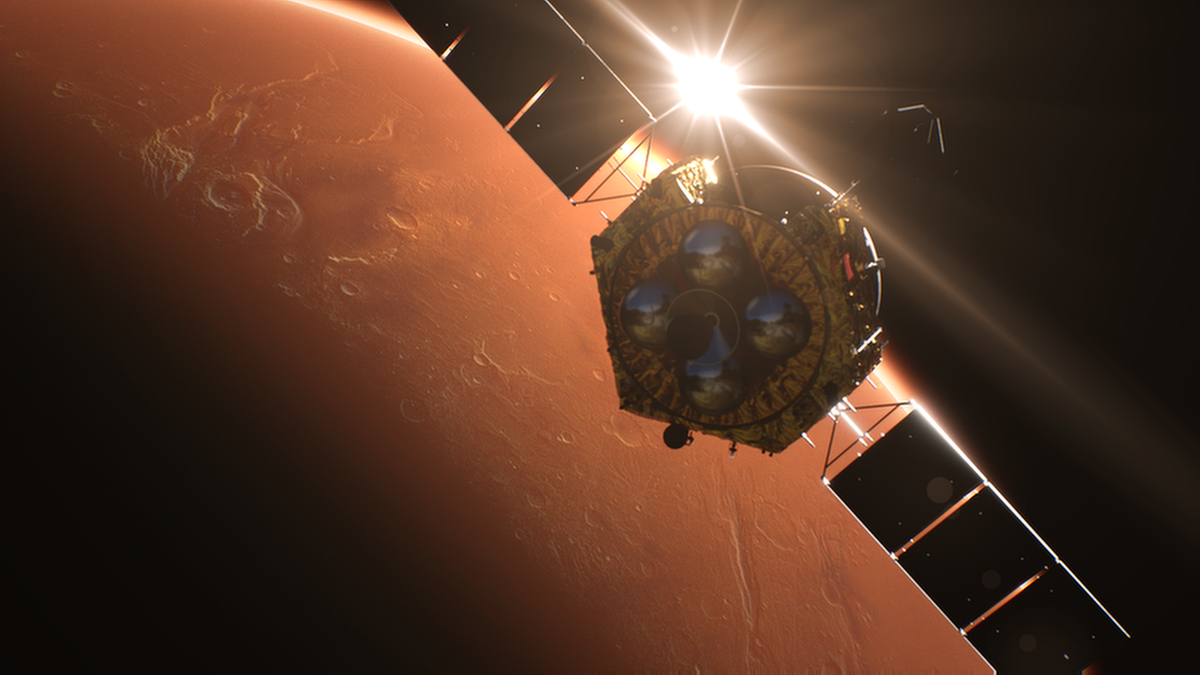China's Top 10 Scientific Breakthroughs in 2021

Illustration of Tianwen 1 probe entering Martian orbit. [Photo provided to China Daily]
Tianwen 1, the unmanned probe for China's first independent Mars mission, landed on the Red Planet on May 2021, marking an important step in China's journey of interstellar exploration and a leap from the Earth-Moon system.
It was China's first landing on an extraterrestrial planet, becoming the second country to land on Mars, another milestone in the development of China's aerospace industry.
China's space station core module Tianhe entered pre-set orbit in April, marking a solid step in building the country's first space station.
Besides, the country's Shenzhou XII and Shenzhou XIII manned spacecraft docked with the Tianhe core module in June and October, respectively, with the latter being the longest crewed spaceflight by China.
Chinese scientists developed an artificial method of synthesizing starch from carbon dioxide, the first of its kind globally.
The study, conducted by the Tianjin Institute of Industrial Biotechnology under the Chinese Academy of Sciences, was published in the journal Science on Sept 24, 2021.
Chang'e-5 lunar mission returned to Earth on Dec 17, 2020, retrieving a total of 1,731 grams of lunar samples, mainly rocks and soil from the moon’s surface.
Chinese researchers studied the lunar samples and dated the youngest rock on the Moon at around 2 billion years old, extending the "life" of lunar volcanism 800-900 million years longer than previously known.
A team composed of scientists from Tsinghua University and Shanghai University of Science and Technology provided insight into the Cryo-EM structure of an extended SARS-CoV-2 replication and transcription complex, as well as its variations and working mechanism.
Using the Five-Hundred-Meter Aperture Spherical Radio Telescope, known as FAST, scientists detected 1,652 independent bursts from a single repeating fast radio burst source, code-named FRB121102.
It is the largest set of fast radio bursts ever detected. Scientists believe it may help clarify the origins of the so-called mysterious signals from deep space.
Scientists have realized the large-scale production of high-performing woven lithium-ion fiber batteries, bringing wirelessly charging electronics via clothes one step closer to reality.
The one-meter-long fiber developed by researchers from Fudan University is proved to be capable of powering wearable electronics including smartphones, smart bracelets and heart rate monitors continuously for a long period of time.
A Chinese research team has designed a 62-qubit programmable superconducting quantum processor, naming it Zu Chongzhi after the noted 5th century Chinese mathematician and astronomer.
The computer contains the largest number of superconducting qubits so far in the world, and achieved two-dimensional programmable quantum walks on the system, a major milestone in the field.
A Chinese research team created the world's first soft robot that can be operated 10,000 meters under the ocean's surface and completed the world's first deep-sea free-swimming test of a soft robot, in the Mariana Trench.
Chinese scientists decoded the spatio-temporal dynamics of bird migration routes and the genetic basis of long-distance migration.
It is the first study elucidating the main factors - past, present and future - shaping the Arctic migration routes and identifies the key genes that may play an important role in determining the migration route length.
